Z and I have been cycling near our house trying to see how far we could get on our bikes without peddling. We start at the top of a hill and just roll down. Z was curious as to whether we would get further on a steeper hill, so I set us the challenge of finding out the effect of gradient on speed.
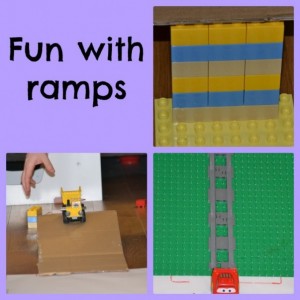
Our basic principle was to just check that the steeper the hill, the further a car would go on the flat surface of our hallway.
We built a ramp with some DUPLO bricks, and our intention was to increase the steepness (also called gradient) of the cardboard ramp and let a car roll down the hill. We marked on the floor (wood) with some chalk how far the car had reached. After a few test runs we found that the car at the same gradient reached different distances each time we did it. We spent quite a while figuring out what was causing this variation. Our car was partly to blame, it was a Lego car which didn't have very free-spinning wheels.
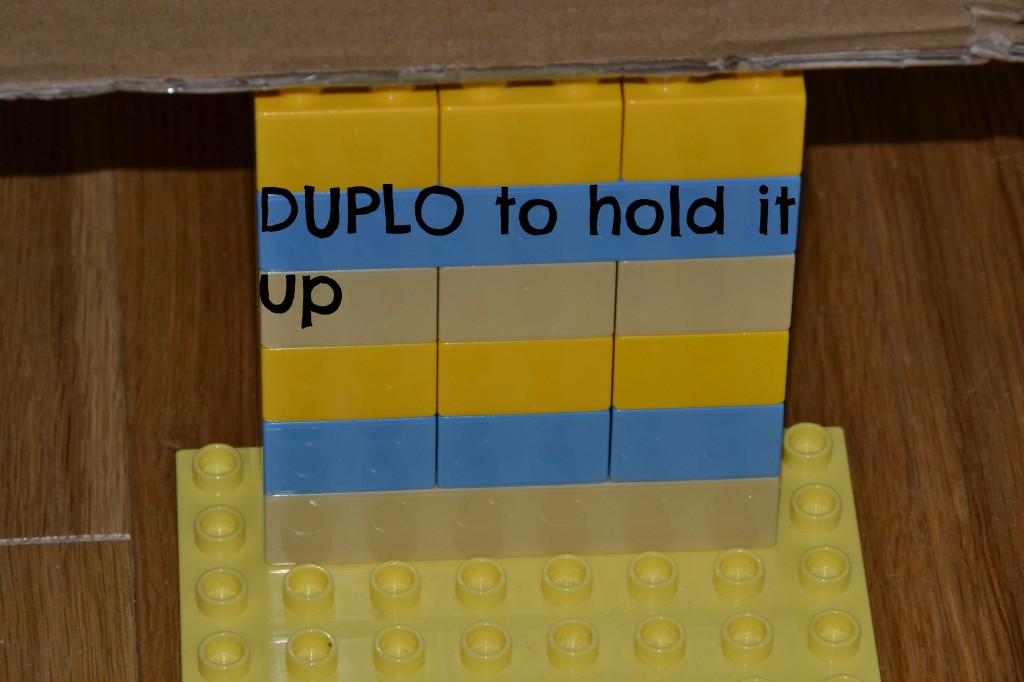
Next, with a newer, smaller better-made car, we tried again. This time, however, the car barely made it off the bottom of the ramp. By this time, our cardboard ramp had sagged a little and was also quite rough. So we then had to rethink our ramp. We also decided to use a roll of paper instead of the chalk as Z kept rubbing the chalk out with his feet.
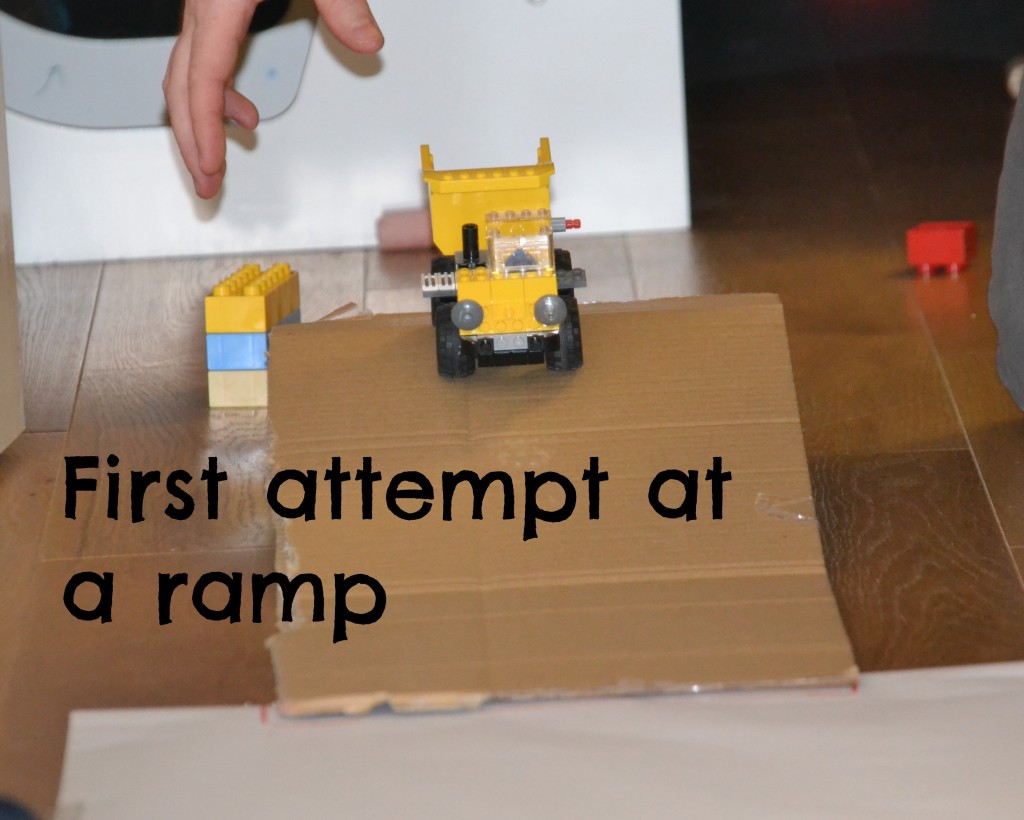
We tried to attach a pen to the back of a car so it would draw a line down the paper. However, the pen slowed the car down so much that it didn't work.
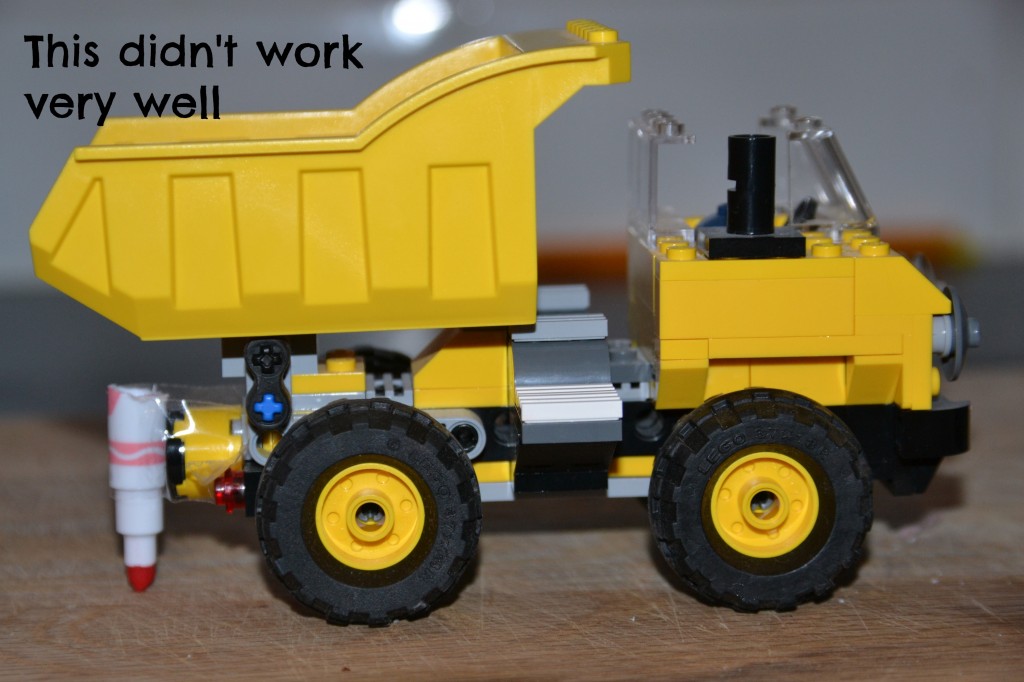
So now we had three problems:
- A sagging ramp.
- No car.
- How to handle the variation in distance travelled at each gradient.
Z thought a DUPLO base plate would be a good idea to use, and I suggested using some track to keep the car on the paper instead of veering off the side. We found a car with free-moving wheels, and I suggested finding the average of distance travelled.
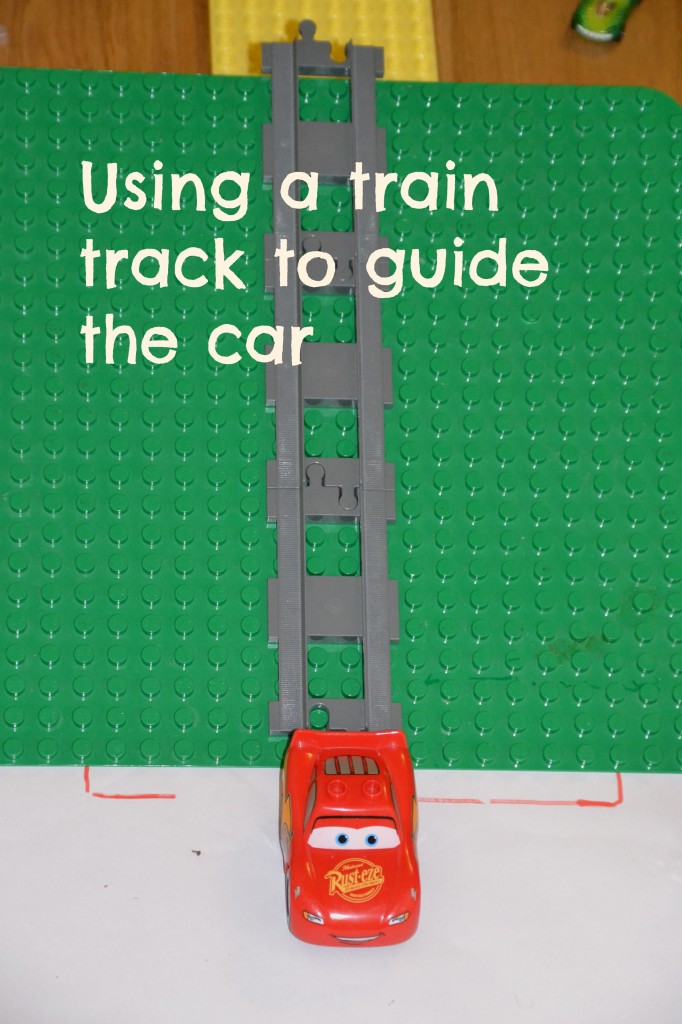
This is how we recorded the results. The number of bricks is the height of the ramp.
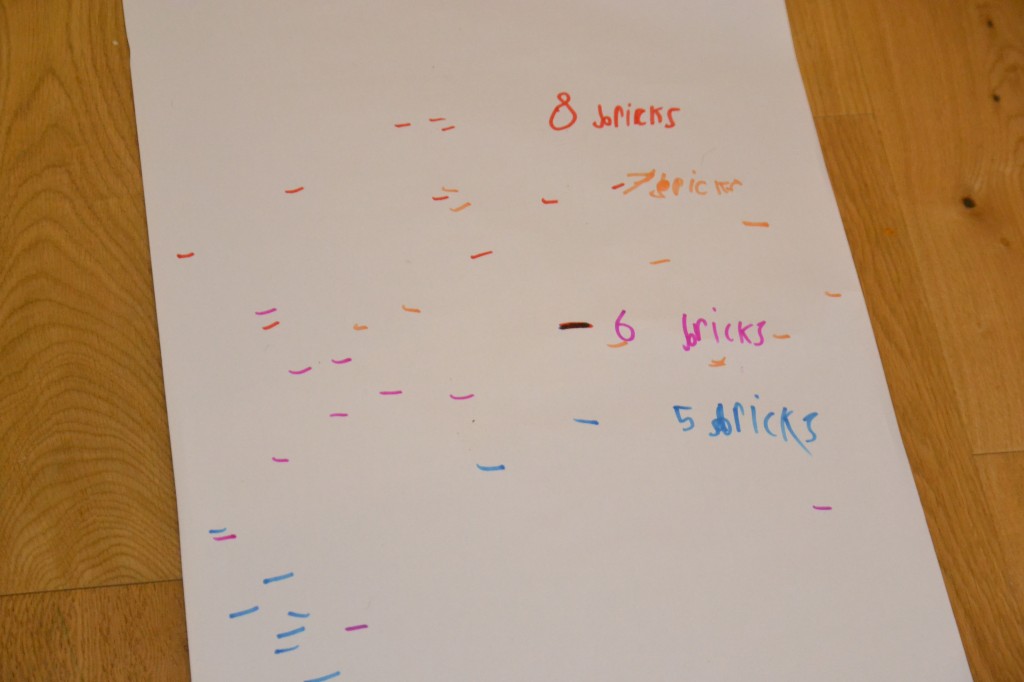
You can see that the greater the gradient ( number of bricks ), the further the car moved down the paper.
After taking the photo, Z continued to collect data. I think he got up to about 12 bricks, then the car just started crashing into the floor.
Can you think of any other challenges to set?
Last Updated on June 30, 2023 by Emma Vanstone
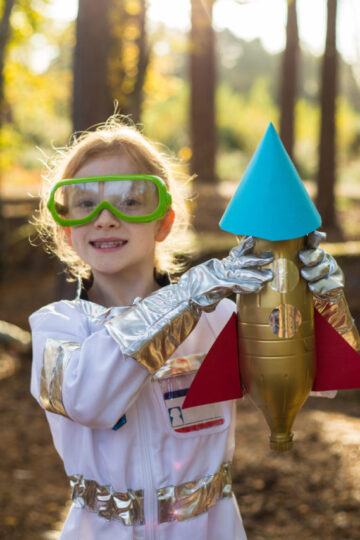

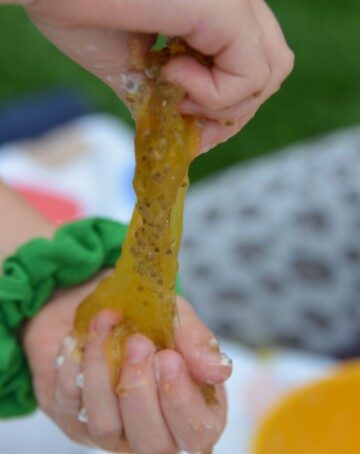
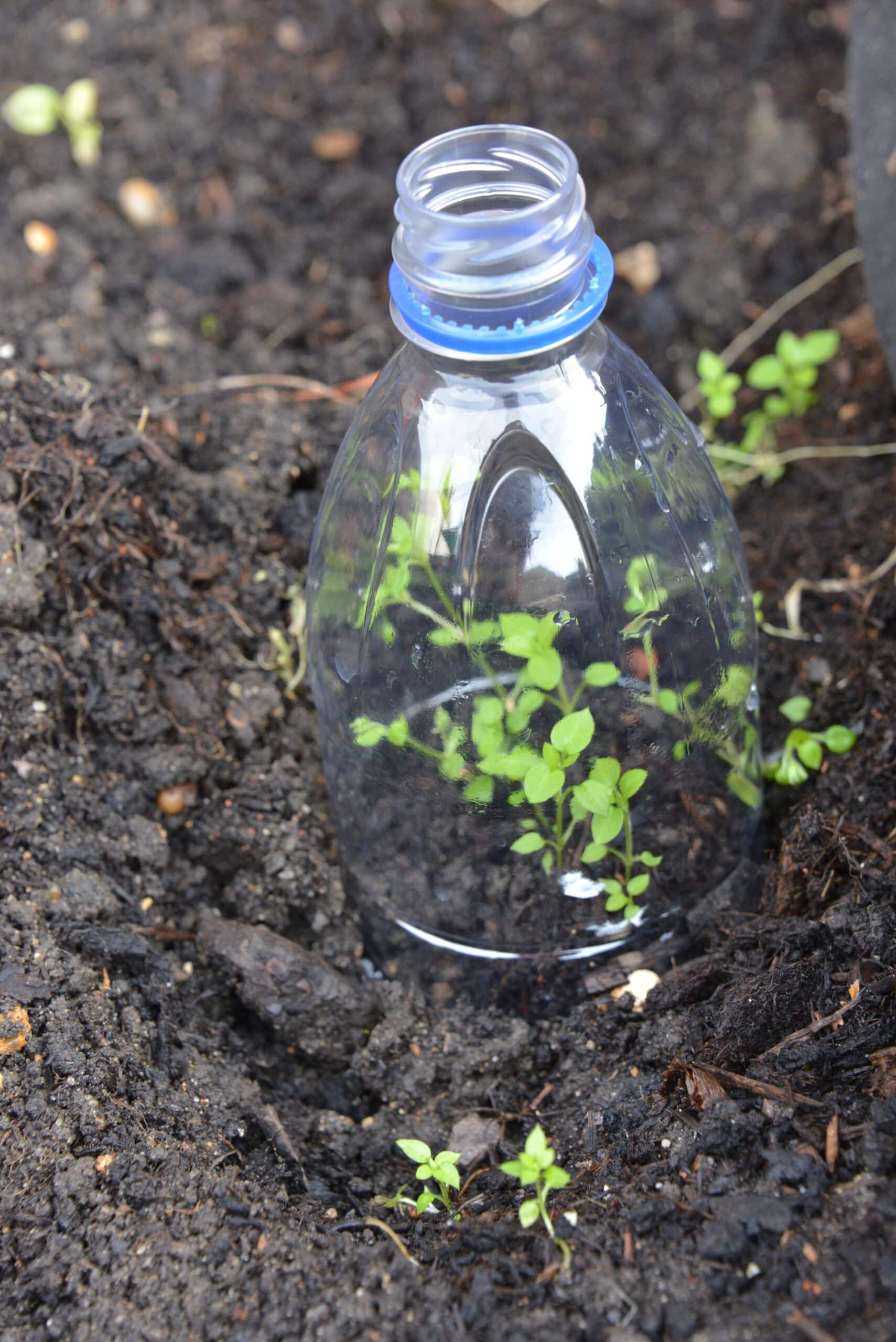
Kimira says
So cool. Cant wait to try
Heidi Butkus says
I really enjoyed this post, since I studied simple machines with my Kinder class and really enjoyed it!
Here is a blog post that showed some pictures of us doing it with blocks and wooden molding pieces that I purchased at Home Depot. I also gave them marbles, and challenged them to make a ramp that would be steep enough to make the marble roll down the ramp and fall into a dish at the bottom without bouncing out of it. It was great fun!
http://heidisongs.blogspot.com/2011/11/another-science-center-two-more-new.html
Heidi
maggy, red ted art says
Yep! That looks like fun to me! A great way to explore.
Thanks for sharing on Kids Get Crafty!
Maggy
Simon Hedin says
Love this blog! Discovered it today, and will pick down some cool tips for when I'm going to hang out a week with my 5yo nephew in September.
This is just the kind of stuff we used to to when I was a kid!
Torie says
This arilcte keeps it real, no doubt.